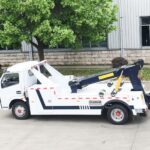When it comes to transporting vehicles, especially those that are immobile or involved in accidents, a flatbed tow truck is an invaluable tool. A flatbed tow truck provides a safe and efficient method of transporting vehicles, as it eliminates the need for a second set of wheels touching the ground. This article will guide you through the process of safely securing and transporting vehicles using a flatbed tow truck.
1. Preparing the Flatbed Tow Truck:
Before you start loading the vehicle onto the flatbed tow truck, it is crucial to ensure that the truck is in proper working condition. Perform a thorough inspection of the truck, checking the brakes, tires, and any hydraulic mechanisms that are involved in raising and lowering the flatbed. Make sure that all the necessary equipment, such as straps, chains, and wheel chocks, are in good condition and easily accessible.
2. Assessing the Vehicle:
Before loading a vehicle onto the flatbed tow truck, it is important to assess its condition and identify any potential hazards. Check for any leaks, loose parts, or sharp edges that could cause damage to the flatbed or the vehicle itself during the loading and transport process. Also, take note of the vehicle’s weight and dimensions to ensure that the flatbed tow truck can handle the load safely.
3. Positioning the Flatbed:
Once you have assessed the vehicle and made sure the tow truck is ready, position the flatbed in a way that allows for easy access and loading. Lower the flatbed to the ground using the hydraulic mechanism, ensuring that it is level and stable. If the ground is uneven, use wheel chocks to prevent any movement of the tow truck during the loading process.
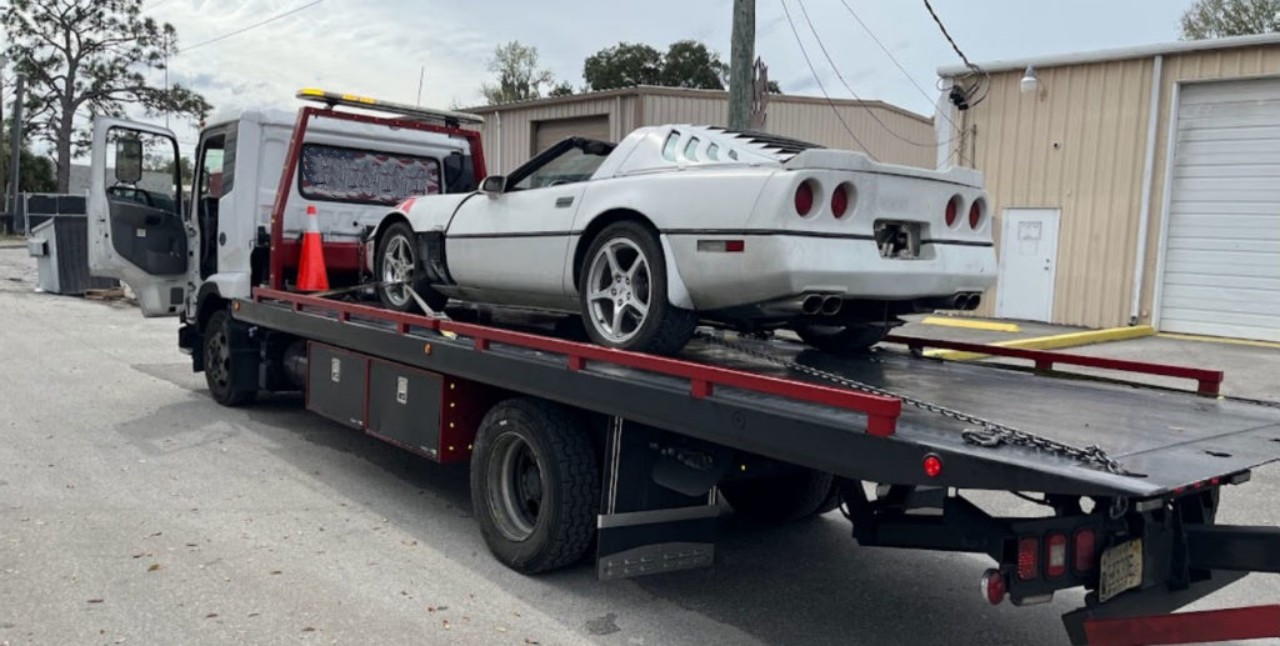
4. Attaching the Straps:
To secure the vehicle on the flatbed, use sturdy straps or chains specifically designed for towing purposes. Begin by attaching the straps to the designated anchor points on the flatbed. These anchor points are typically located along the sides and corners of the flatbed. Ensure that the straps are tightly secured and that they are positioned to provide even weight distribution.
5. Positioning the Vehicle:
To load the vehicle onto the flatbed, position it in front of the flatbed with the rear wheels aligned with the edge. If the vehicle is immobile or unable to move, use a winch or a forklift to carefully maneuver it onto the flatbed. Be cautious of any low-hanging parts, such as bumpers or spoilers, to avoid causing damage during the loading process.
6. Securing the Vehicle:
Once the vehicle is in place on the flatbed, begin securing it using the straps or chains. Attach the straps to sturdy parts of the vehicle, such as the chassis or frame, ensuring that they are not in contact with any delicate components. Tighten the straps or chains securely, but be careful not to overtighten and cause unnecessary strain on the vehicle.
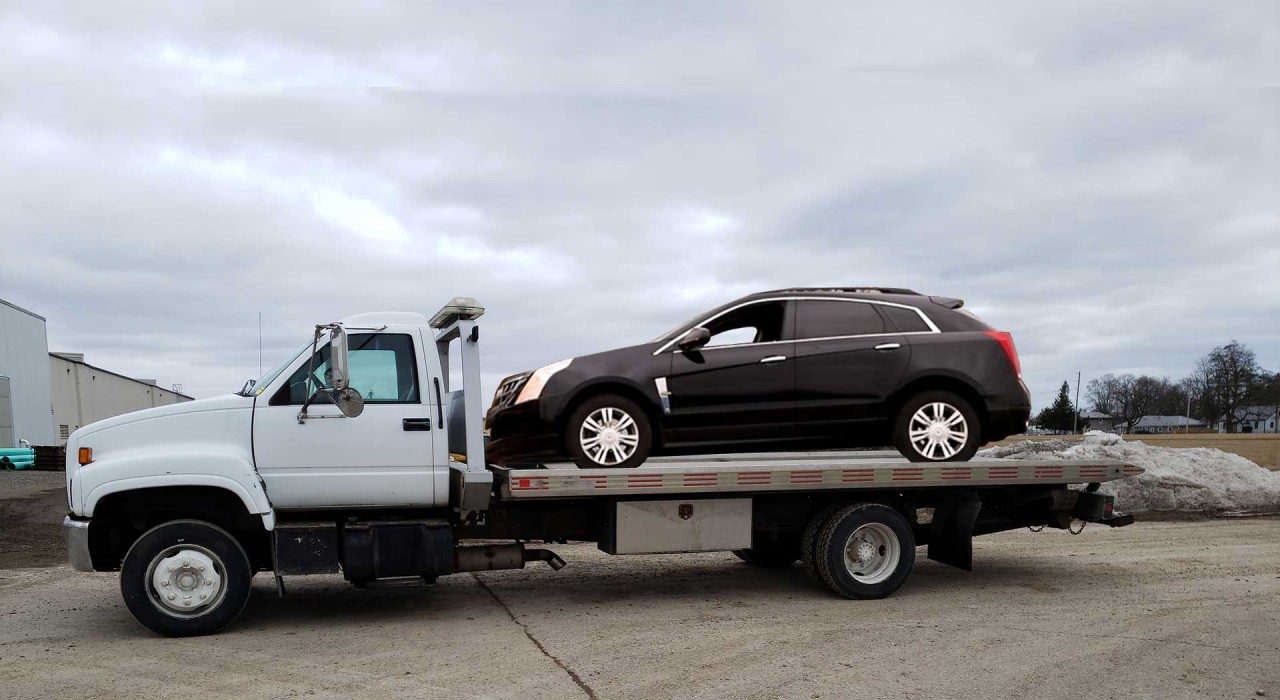
7. Checking the Securement:
After the vehicle is loaded and secured, perform a thorough check to ensure that everything is properly in place. Double-check the tightness of the straps or chains, ensuring that they are not loose or slipping. Give the vehicle a gentle shake to test its stability on the flatbed. If any issues are detected, make the necessary adjustments before proceeding.
8. Raising the Flatbed:
Once you have confirmed that the vehicle is securely fastened, use the hydraulic mechanism to raise the flatbed. Lift it slowly and steadily, ensuring that the vehicle remains stable during the elevation process. Keep an eye on the vehicle’s position and make any necessary adjustments to prevent it from shifting or sliding.
9. Final Safety Checks:
Before hitting the road, perform a final safety check to ensure that everything is in order. Confirm that all the lights and indicators on the tow truck and the loaded vehicle are functioning properly. Check that the brakes are working effectively by engaging and releasing them a few times. Inspect the straps or chains once again to verify their tightness and security. Make sure that the load is evenly distributed on the flatbed and that there is no excessive weight on one side.
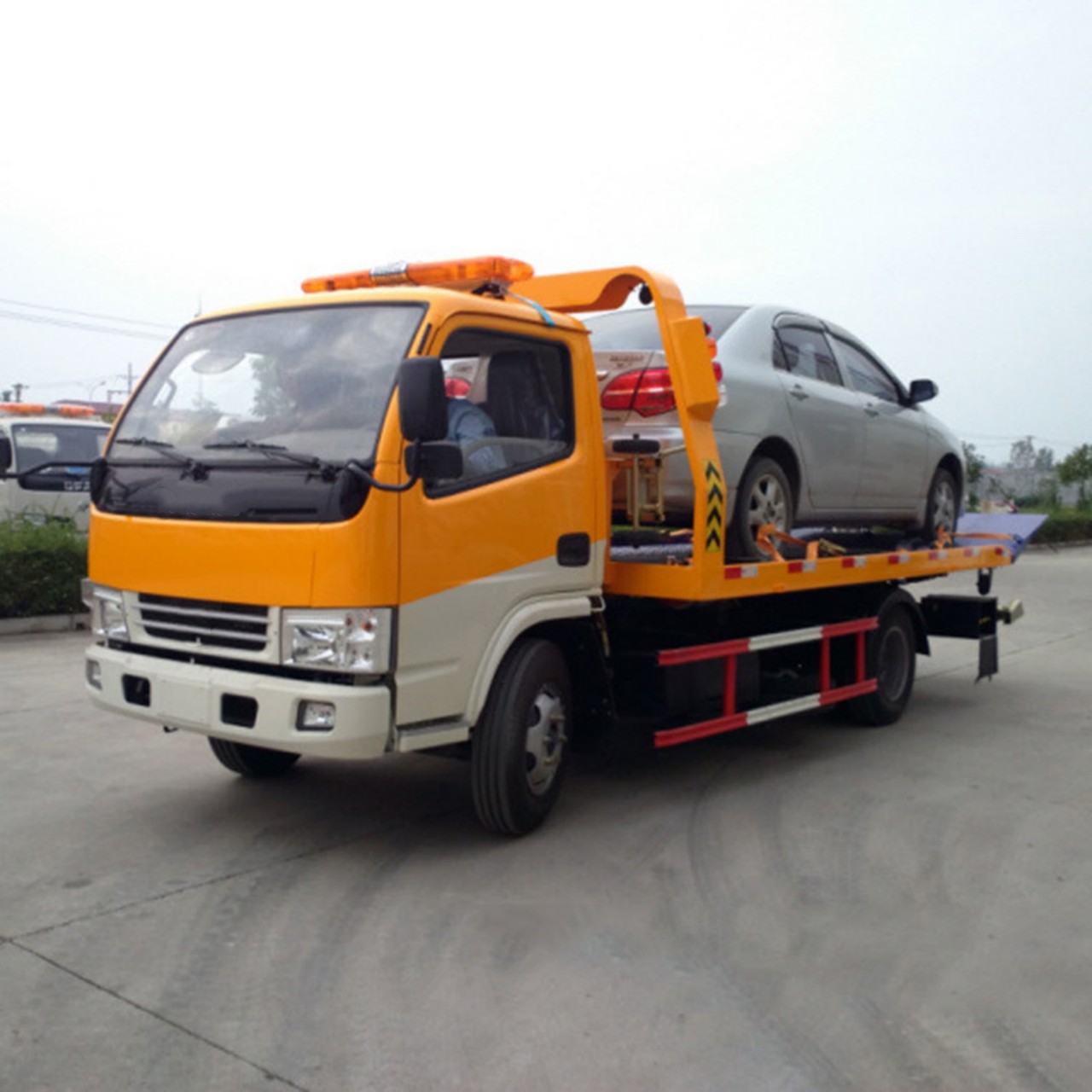
10. Safe Transportation:
When transporting the vehicle, it is essential to drive cautiously and be aware of the added weight and dimensions of the flatbed tow truck. Take turns slowly and maintain a safe distance from other vehicles on the road. Avoid sudden braking or acceleration, as it can affect the stability of the loaded vehicle. Always adhere to traffic regulations and follow the recommended speed limits.
11. Unloading the Vehicle:
Upon reaching the desired destination, find a safe and level area to unload the vehicle. Lower the flatbed using the hydraulic mechanism, ensuring a gradual and controlled descent. Once the flatbed is on the ground, remove the straps or chains from the vehicle carefully. Pay attention to any movement or shifting of the vehicle as you release the restraints. Double-check that the vehicle is safely positioned on the ground before fully disengaging from the flatbed.
12. Maintenance and Inspection:
After completing the transportation process, take the time to inspect the flatbed tow truck for any wear and tear or damage caused during the operation. Replace any worn-out or damaged equipment and address any mechanical issues promptly. Regularly maintain the tow truck, including checking the hydraulic system, brakes, and tires, to ensure its optimal performance and safety.
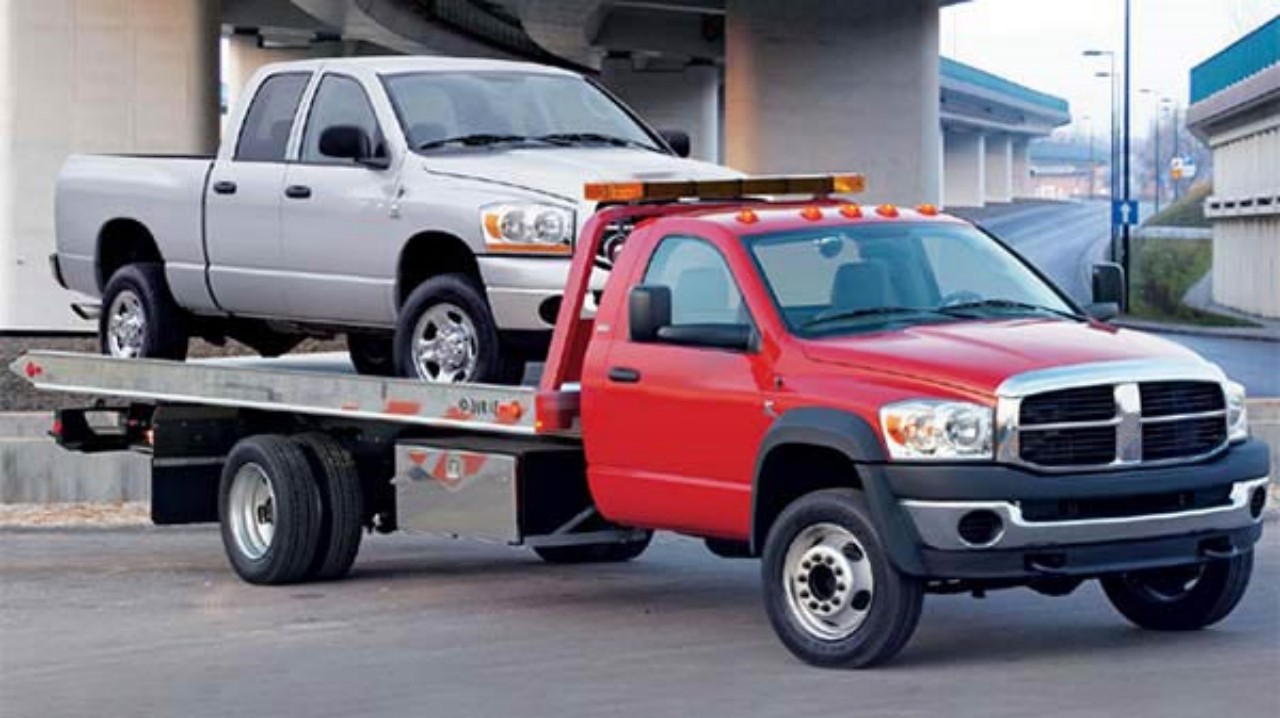
Conclusion:
Transporting vehicles using a flatbed tow truck can be a safe and efficient method if proper procedures are followed. By preparing the tow truck, assessing the vehicle, securely fastening the vehicle to the flatbed, and adhering to safety guidelines during transportation, you can ensure a smooth and secure journey. Remember to perform regular maintenance on the tow truck and its equipment to guarantee its reliability. Following these steps will help you safely secure and transport vehicles using a flatbed tow truck, ensuring the protection of both the vehicle being transported and those on the road.



